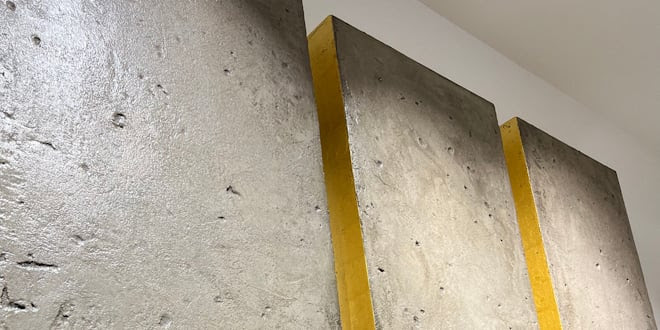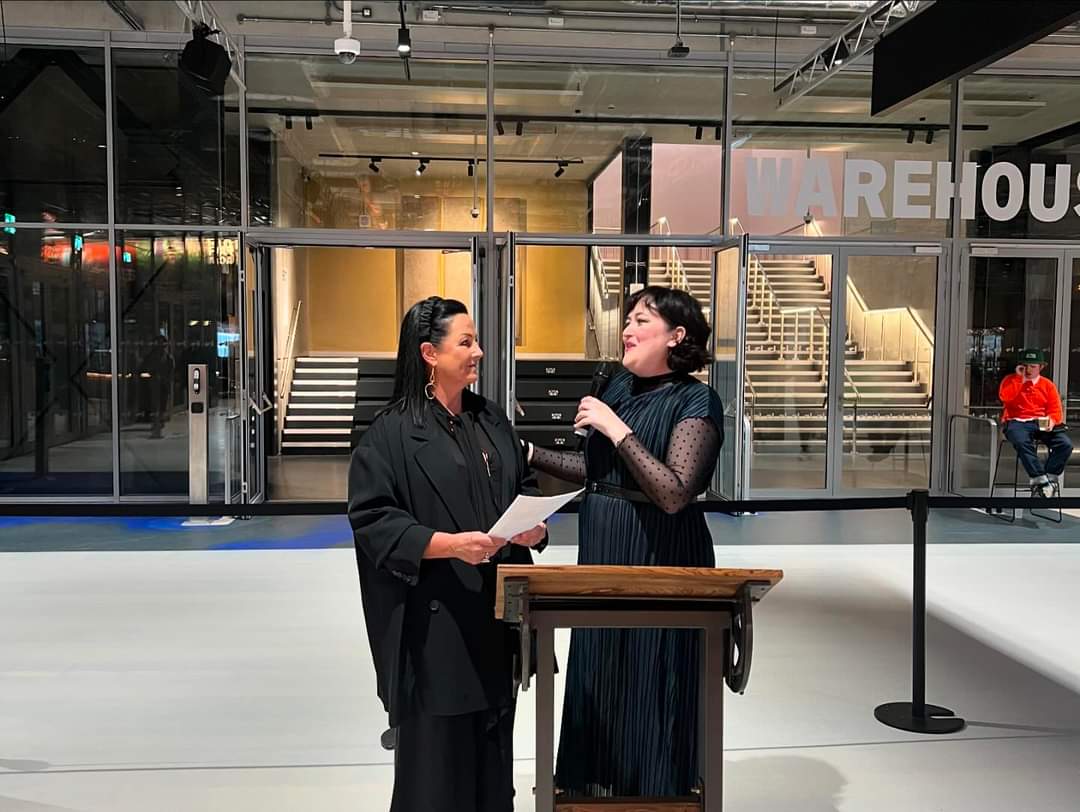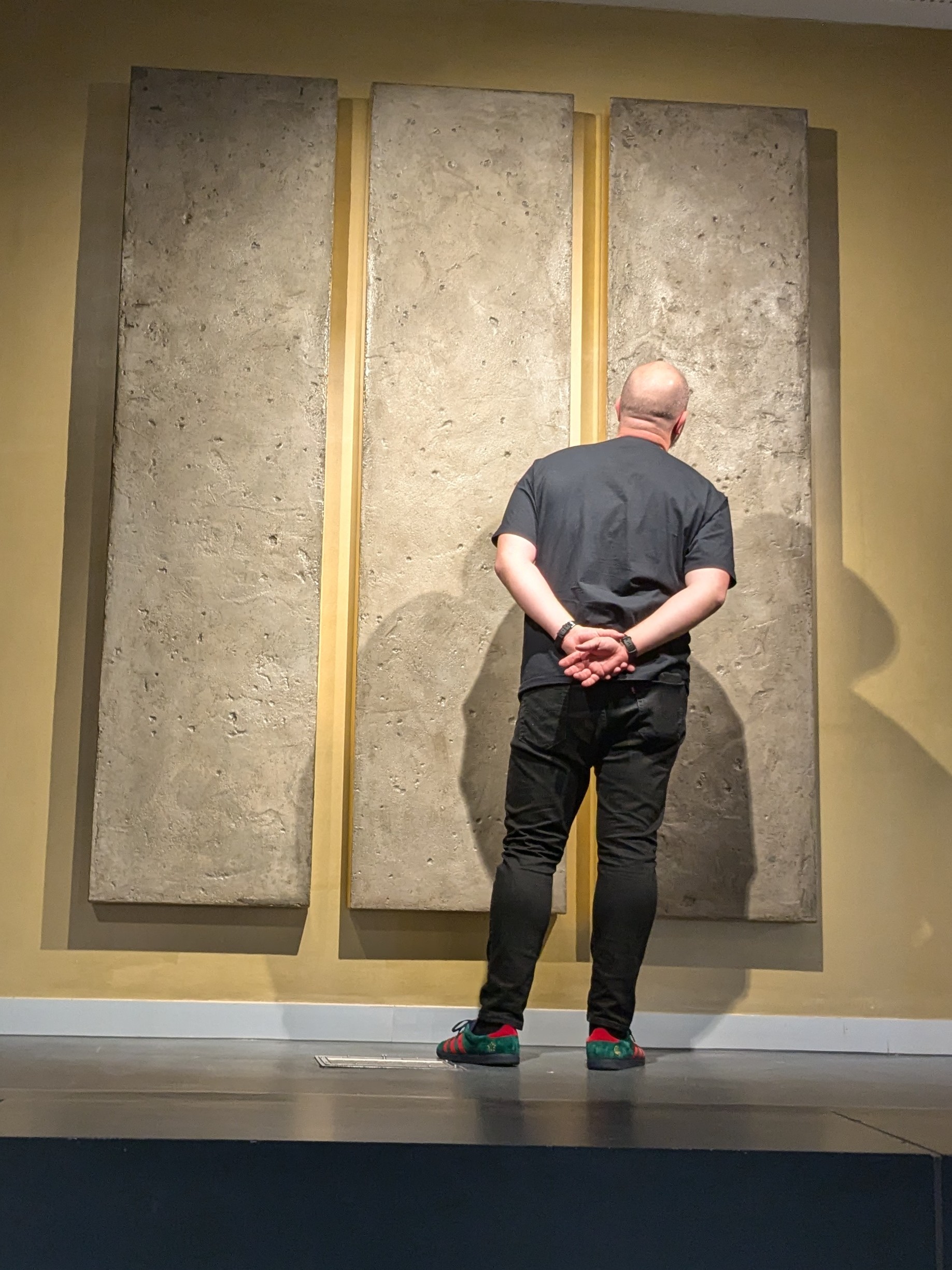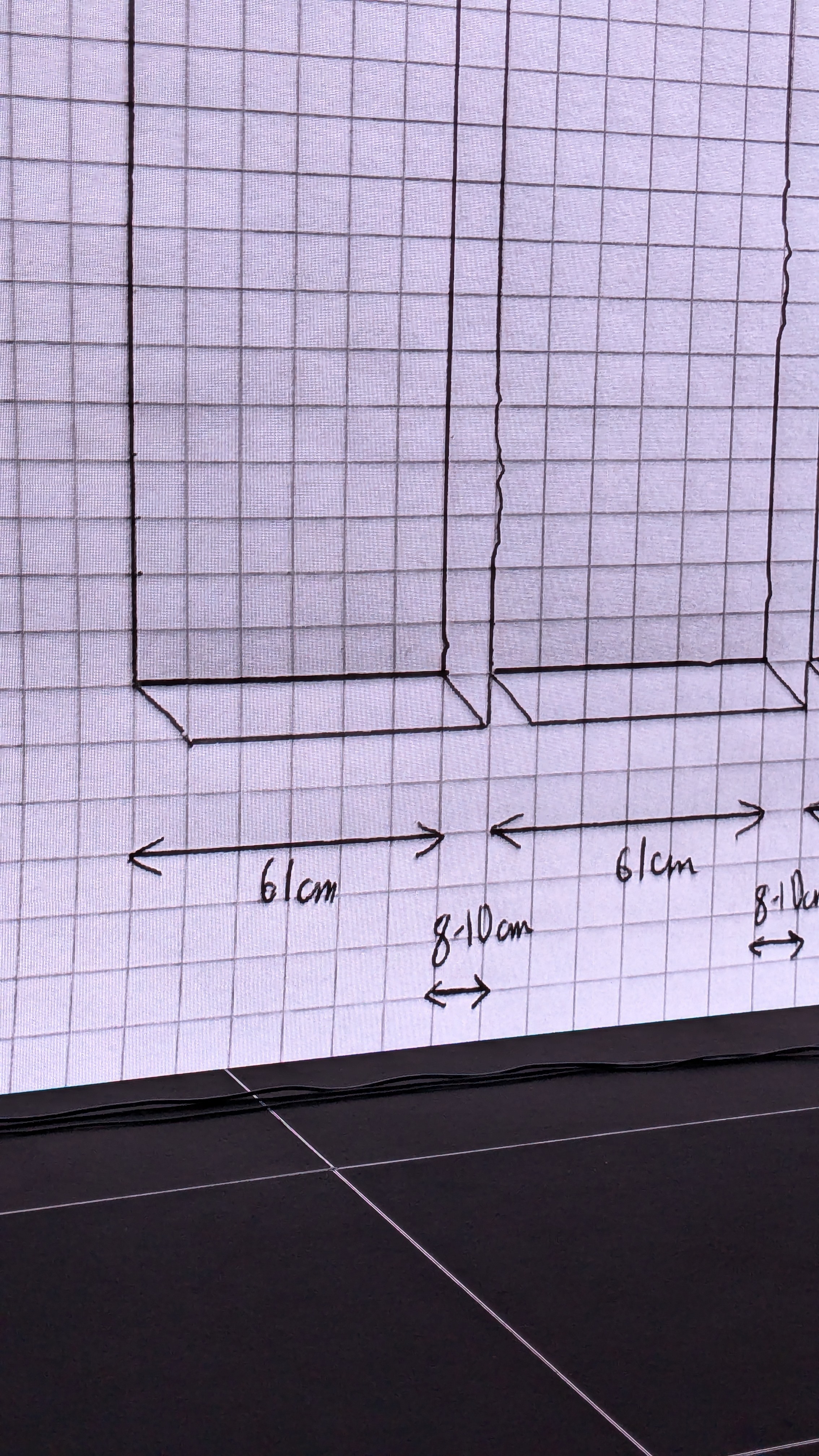In Cupped Hands: live reading at Factory International


| I was honoured to perform a live reading of In Cupped Hands, my text about Susan Gunn's paintings Ground Evolution, at Factory International, Aviva Studios, on Thursday 19 September 2024, to launch Gunn's exhibition of the artworks. Ground Evolution has a fascinating history. In 2017, artists and creative leaders gathered on the site of the Old Granada Studios, which is today home to Aviva Studios. The muscian Laurie Anderson performed live before then-leader of Manchester City Council Sir Richard Leese, who in turn performed a ceremonial breaking of the ground. In Autumn 2024, Susan Gunn presents Ground Evolution – a triptych made from earth, granite and concrete collected from the disturbed ground. The artwork returns to the site where it all began as a lasting monument to the changing faces of the creative industry in Manchester. My orignial text was written to mark Gunn’s solo exhibition at HOME Manchester in 2018. I attempted to imagine what it felt like to make pigment from the ashes of demolition, the tactility of making and the touch of materials repeated in the peace of your own studio.   Full text of In Cupped Hands, edited to reflect its installation at Factory, 2024: |
LAURA:
In cupped hands, the ground falls through her fingers; tinting skin with a fine, silky ash. Dirt clings to the rivets and lines, highlighting finger prints. Craggy pebbles make soft depressions here and there in the larger pile on the floor.
Ashes to ashes, dust to dust.
Earth, cement and brick, milled to a fine pigment. There’s an immortality to it.
It could be moon dust, pock-marked with craters. Or pavement obliterated by artillery fire. It could be pulverized volcanic glass. It could be ancient rubble, carefully scraped out from underneath a temple; separated, sampled, and archived. Solid things turned to sand, washed away, compressed, reshaped, broken up, and mined.
Who can tell, in this disintegrated state, what the dirt once was? What memories does it contain? What other hands have sifted through it?
SUSAN:
She considers the value of what’s here, before she puts it through its final transformation: shaping the soil and stories into a final, forever object, made to hang on someone’s wall, or in a gallery or a museum, or in a succession of cities and towns. Something to be stared at and questioned and loved.
This is what I’ll make from the ashes, she thinks. This mound of buildings; reduced to wreckage, scooped up and taken from a site of transition. Pounded into nothingness. Out with the old, in with the new. Manchester is tied into a ceaseless cycle of collapse and construction. The rest of this substance, this thing in her hands, is also the bedrock for something other; it’ll be covered and replaced, flattened by new foundations and trampled by new people; decades and centuries of movement and weight that will create a stratum of rock.
LAURA:
Imagine a future team of archaeologists, excavating traces of TV studios and offices and coffee shops. Would they be able to identify small clues from the particles, recognising what we did here? When everything is squashed into matter, what human deeds linger?
SUSAN:
She looks to the calcium carbonate canvases nearby. They’ve experienced a similar process. Calcium carbonate used to be bones and teeth and snails and eggs; a powder that has had multiple lives. Living, breathing things, now dry and long dead. Add liquid and slather it onto a flat surface, and it moves and shrinks and dries into a smooth porcelain. With time, this new object has become a sharp rectangle of hard cream; a surface of tectonic plates and chaos and condensed history. Hairline fractures pucker through. This is calcium set into something unpredictable; a tension of cracks finding their own way out of thin layers of cautiously applied paste. Dead matter, reborn.
LAURA:
In a game of one-upmanship, the darker, grittier earth she holds in her cupped hands will be tougher to manipulate. Fighting against the trowel, the cement will dry into a bruised, sandy block. She’ll make three in a row – a triptych that echoes an Assyrian relief, remembering the ruins before reconstruction; a snapshot of the in-between, of the war between old and new.
She’ll make another, smaller canvas in a shock of opulent gold. A tribute to the past and a beacon of hope. It’ll hover high up, out of reach, at the shoulder of the three. A base of lamp black pigment – ground coal – will give the entity an unexpected depth and texture. From the floor, it’ll look like a far-away obelisk dipped in liquid gold; the ash will fall away, revealing an improbable, floating structure; an orbital city gleaming in the light.
SUSAN:
From cupped hands, a future will emerge.
END.